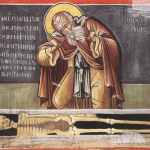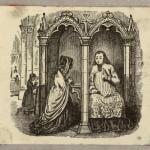at the University Bookman:
Agatha Christie’s name is practically synonymous with comfort reading. Her publishers used to promise readers “a Christie for Christmas,” and her works are the inspiration for the mystery subgenre known as “cozies.” Quaint little English villages, low-rent lords and shady ladies, just a spot of murder before tea at the vicarage—this is Dame Agatha’s public image.
But on the occasion of her 125th birthday, we might do well to remember that both of Christie’s most memorable detectives hid their true characters under a silly exterior. Not only murderers but fellow sleuths were always underestimating fluffy Miss Marple, with her head full of anecdotes from her childhood in St. Mary Mead, and Hercule Poirot with his malapropisms and waxed mustaches. Even Christie’s admirers tend to underestimate her. She’ll get some praise for her algebraic plots and excruciatingly fair mysteries—you’ll kick yourself because you think you could’ve guessed, yet somehow you never do. She sometimes gets praised for the sheer wiggy variety of her solutions: Everybody did it, nobody did it, I did it! (With just a touch more postmodernism she could’ve convinced you that you did it.) But if you want subtle characterization in a murder mystery, the conventional wisdom goes, you need somebody like Dorothy L. Sayers. Christie only does cartoons.
Whereas what always struck me most about Christie was her Dostoyevskyan ability to create characters who embody a particular extreme human mood, or mode of being.
more–and be careful, some of the hyperlinks are a bit spoilerous!











